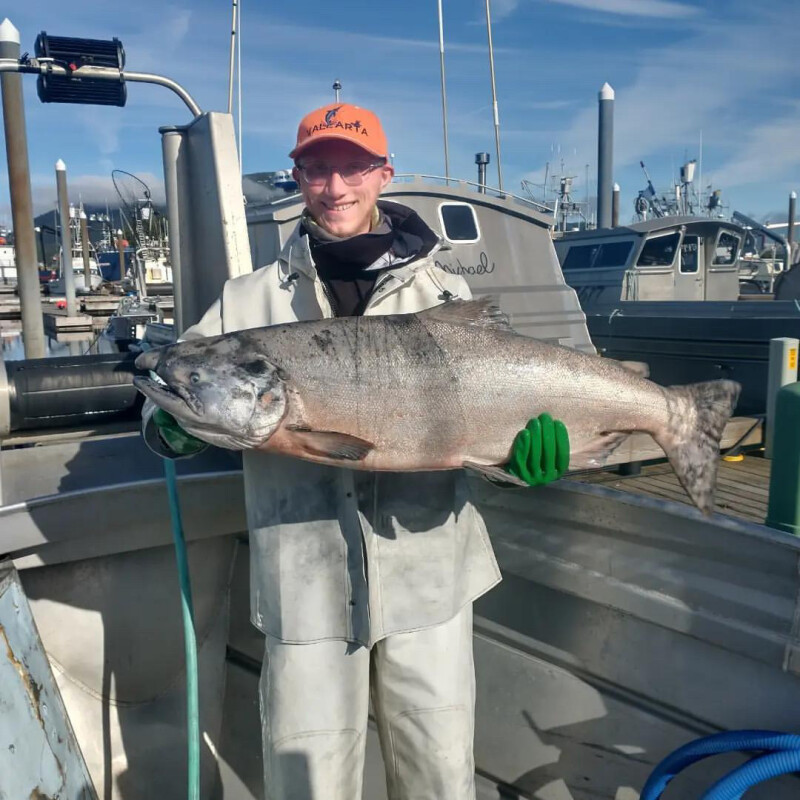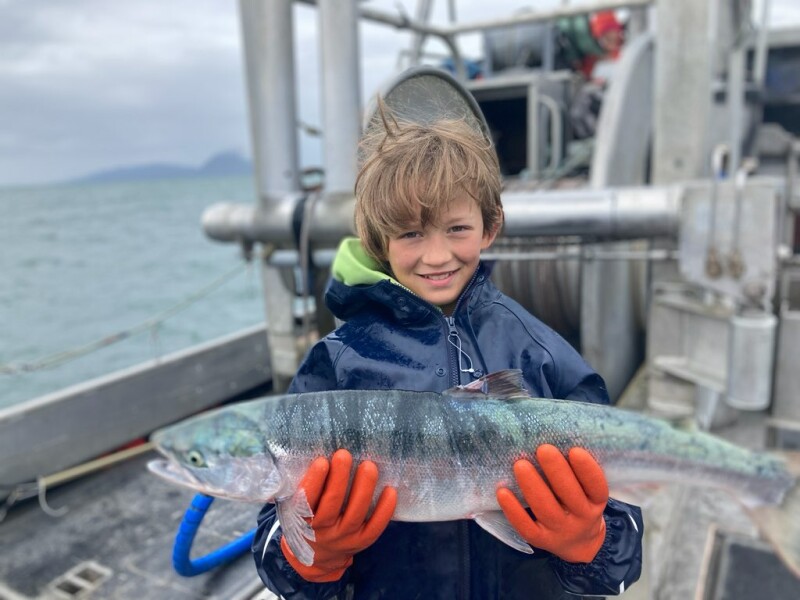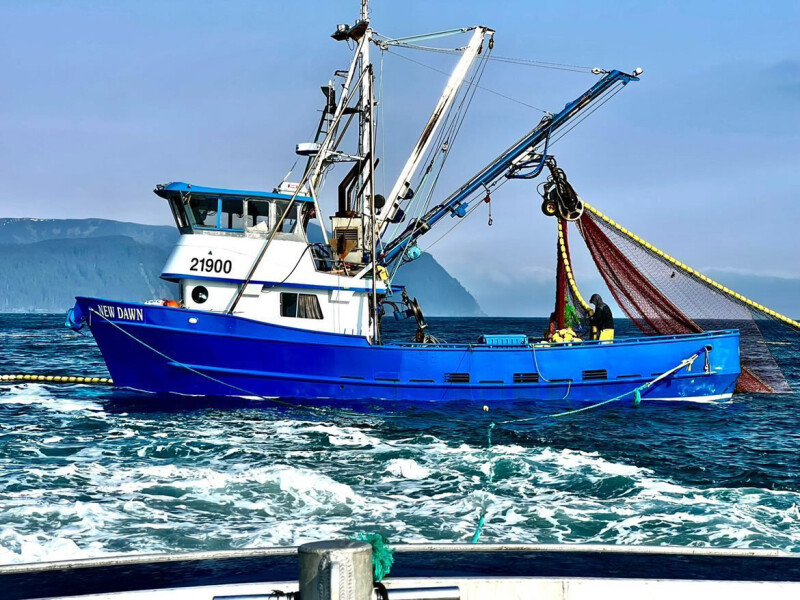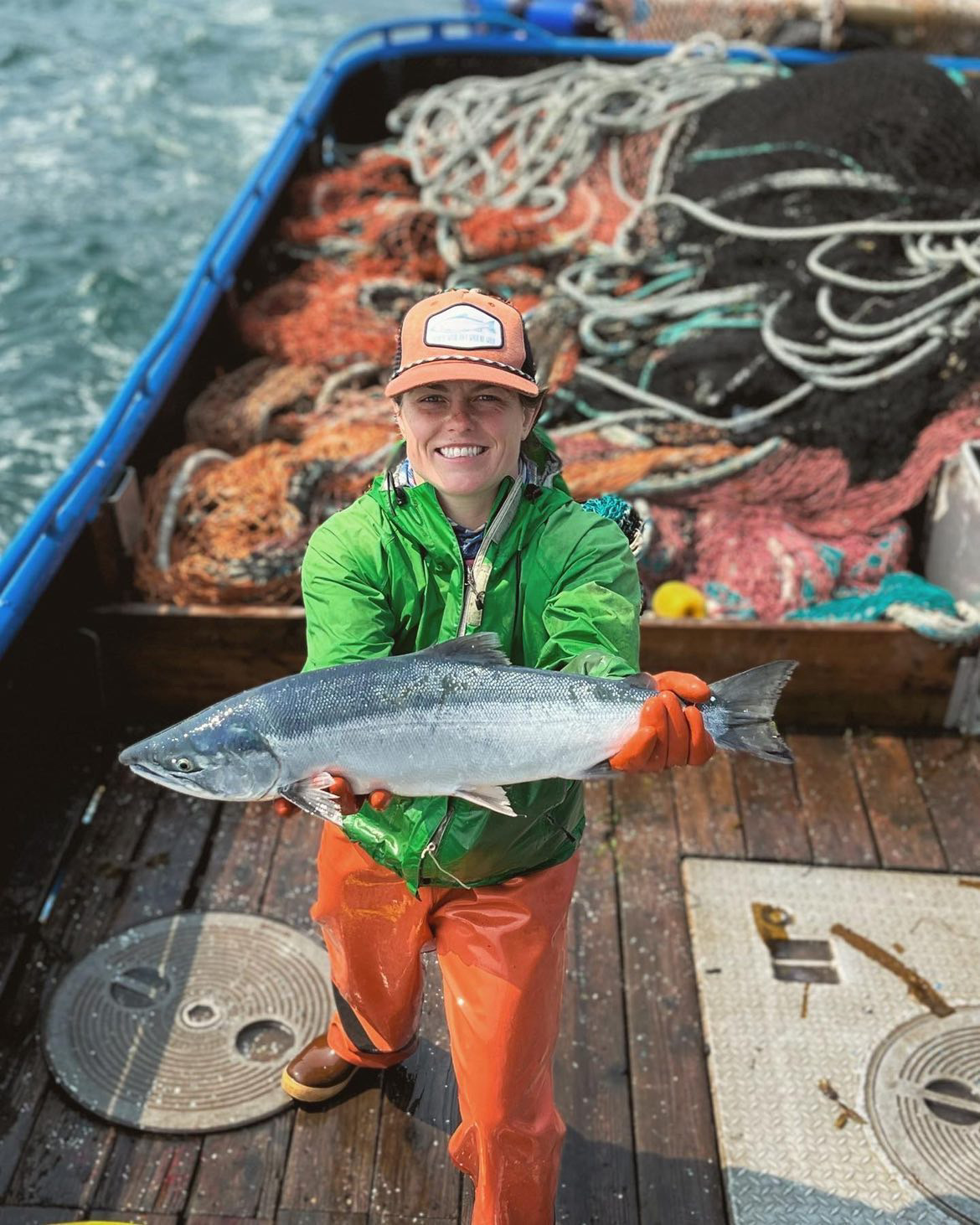Alaska’s salmon season went off with a bang in some areas and a thud in others, while some areas will have to wait until fish arrive to make predictions on their seasons.
As of June 26, total landings for all species of salmon tallied up to 7.75 million, of which 59,000 were chinooks, 1.6 million chums, 2,000 cohos, 1 million pinks, and 5.1 million sockeyes. Copper River salmon made its annual debut with an opening on May 16.
The first fish to hit Pike Place Market in Seattle brought retail prices of up to $125 per pound for chinooks. There were various 8-ounce cuts sold at around $90 per pound, making the price more palatable for diners waiting in anticipation.
Copper River sockeye sold at retail for around $75 per pound, but prices usually drop as other salmon fisheries come on line to fill the hungry supply chain for fresh product.
On the fishing grounds, that early-fish hype translated for fishermen to $16.50 per pound for the chinooks and $11.50 per pound for the sockeyes.
As of June 26, the Copper River fleet had landed 10,000 chinooks and 416,000 sockeye, and many had already made the move to fish favorite areas in Prince William Sound. Landings in the Sound’s Eshamy District stood at 254,000 sockeyes on June 26.
“The flats were good,” says Justin Hansen, a crewmember on the Raging Bull. “Prices were high for everyone in the fleet.”

Prince William Sound seiners setting for early chums had landed 371,000 chums in the general seine category, with another 316,000 coming from hatchery harvests.
The last week of June, Bristol Bay gill netters fish under a management schedule affectionately known as “free week.” Though it is difficult to determine if catches portend meager or monster sockeye returns, anecdotal reports from around the districts indicate that the bay may be on track for a harvest that could potentially hit a record 60 million sockeyes.
Southeast Alaska gill netters got their first opener on June 19, and Lynn Canal fishermen targeting early chums delivered an average of 1,000 pounds for the first opener.
As of June 26, the fleet had landed 10,000 chums.
“Safe to say, we’re not starting off with a bang,” says Lindsey Bloom, who fished that opener on the canal aboard the Rainy Dawn. She texted a few days later to say that “my husband is out this opener without us due to Little League championship, but sounds like it has def picked up from last week.”

Meanwhile, spring season trollers in Southeast had racked up a harvest of 10,000 chinooks as of June 26. The fishery management plan for non-terminal (not near natal streams) chinooks opens fishing periods by emergency order based upon an abundance index. The summer troll fishing season has been scheduled to open on July 1.
Kodiak Island kicked off its salmon season in early June. According to the most recent Alaska Division of Fish and Game blue sheet, landings there tallied up to 338,000 sockeyes and 72,000 chums.
The New Dawn was out working capes along Prince William Sound. Clifton Ivanoff, who fishes with his brother, Reuben, reports their newly retrofitted boat is performing well (see ‘New splashes in Alaska,’ in NF June 11).
“Each improvement makes you wonder why you waited so long to upgrade,” he says.
South Alaska Peninsula seiners, drift, and set gillnetters started their season in early June, and by the ADF&G blue sheet they had caught 3.9 million sockeyes, 353,000 chums, and nearly 1 million pinks. That’s a healthy showing of early pinks, and though even-numbered yearly returns generally don’t produce as much as the odd-numbered year, the area might hold a few surprises before the season typically ends in late August.
Other areas to watch as the calendar flips to July will be Cook Inlet, Kuskokwim Bay, and Norton and Kotzebue Sound. Super low escapement via sonar counts in the Yukon River have put commercial and subsistence fisheries on hold indefinitely, and the Kuskokwim River appears to be headed for the same prognosis.








